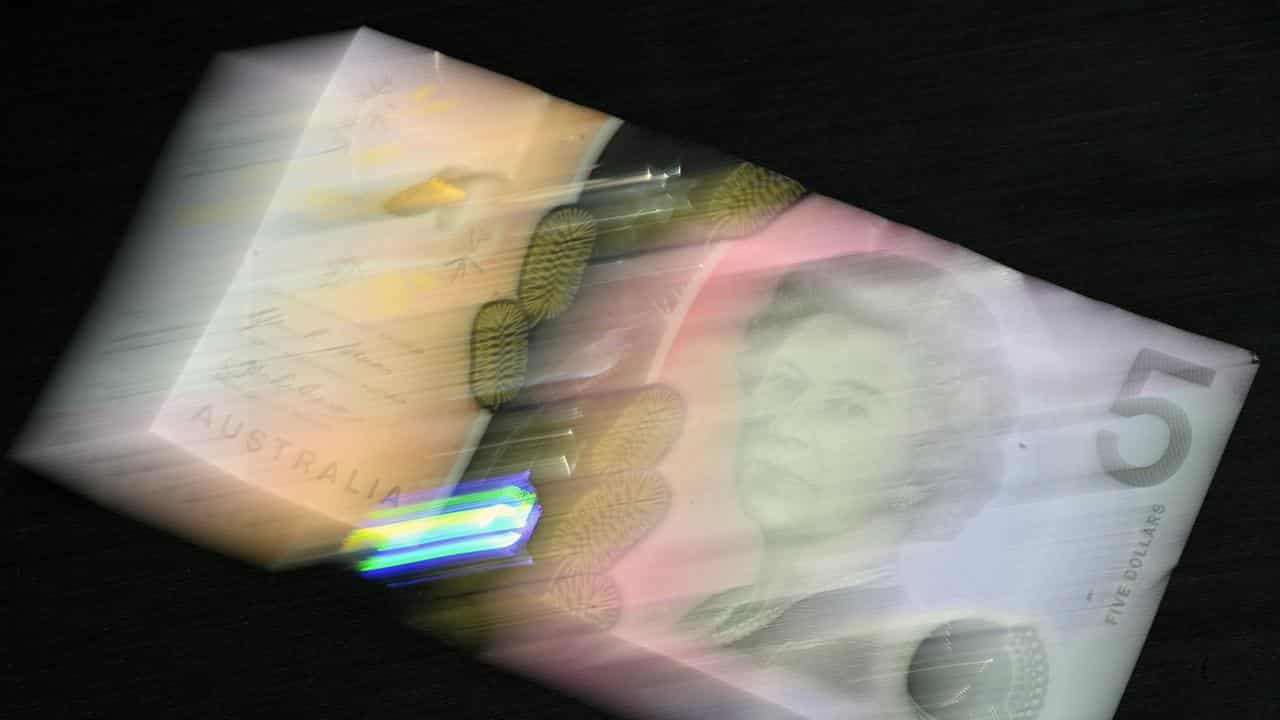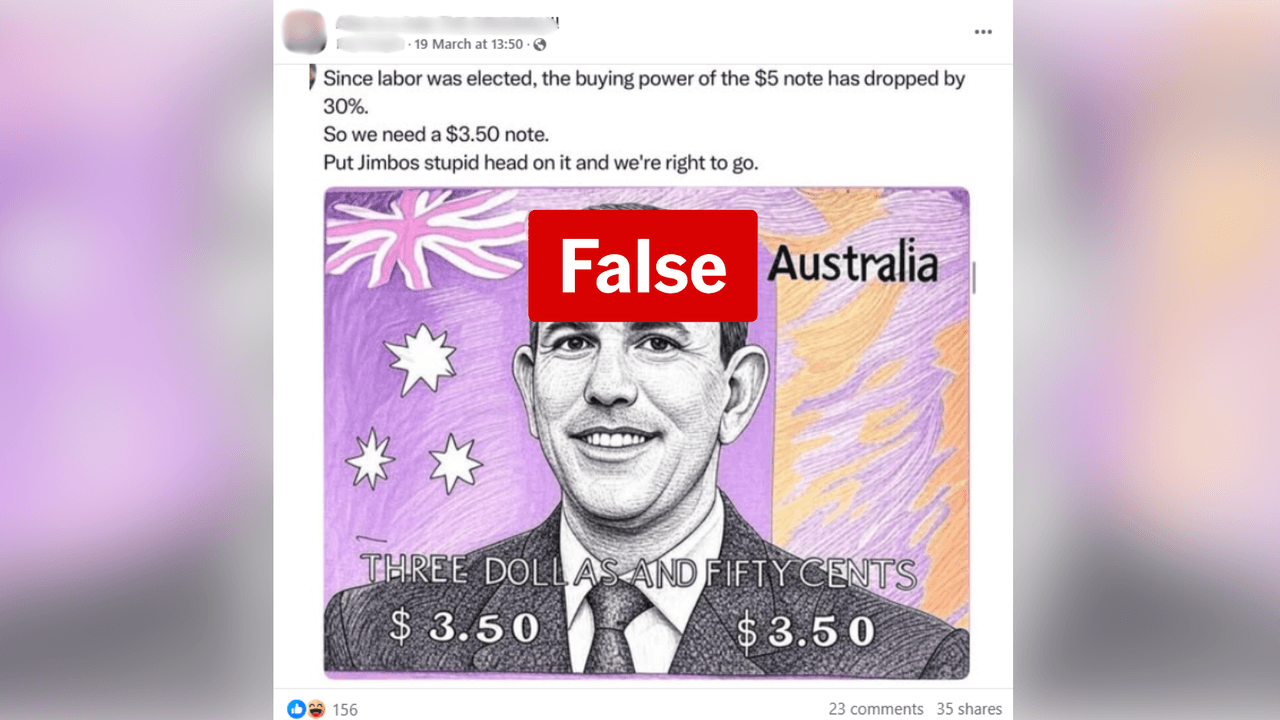
What was claimed
The "buying power" of $5 has decreased by 30 per cent since Labor was elected.
Our verdict
False. To date, inflation has reduced purchasing power by 12.5 per cent over Labor's term.
AAP FACTCHECK - The purchasing power of a $5 note has not dropped by 30 per cent since Labor came to power, contrary to online claims.
The true figure is less than half that rate.
Economists told AAP FactCheck the assertion is false, as purchasing power has actually decreased by 12.5 per cent over Labor's term.
The claim was made in a Facebook post that includes a screenshot of a tweet, captioned: "Since labor was elected, the buying power of the $5 note has dropped by 30%. So we need a $3.50 note. Put Jimbos stupid head on it and we're right to go."

A currency's buying power is affected by inflation. So, as the price of goods rises, $5 buys fewer goods and services.
The rate of inflation is measured by the Australian Bureau of Statistics (ABS), with the central figure calculated using the Consumer Price Index (CPI), which tracks price changes of 87 classes - across 11 categories - of goods and services.
The Labor government came to power on May 23, 2022, with the full cabinet sworn in on June 1, 2022.
The Reserve Bank of Australia's inflation calculator uses CPI data to show changes in inflation between two dates.
The calculator shows inflation increased by 12.5 per cent between the March quarter 2022 and the December quarter of 2024, the most recent.
This would mean the purchasing power of $5 reduced to $4.44 over the period.

While some may be tempted to calculate the original figure, before inflation, by subtracting 12.5 per cent from $5, University of Western Australia macroeconomist Jakob Madsen told AAP FactCheck that's incorrect.
Professor Madsen agreed the purchasing power of a $5 note has declined by 12.5 per cent over Labor's term, rather than the 30 per cent claimed.
However, the figure is calculated correctly by dividing $5 by 1.125.
This determines what the original value was, before it was affected by a 12.5 per cent increase in inflation to reach $5.
In the calculation above, 1.0 represents 100 per cent of the original value and 0.125 represents 12.5 per cent inflation, to equal 1.125.
Added together, that makes 1.125 and dividing $5 by 1.125 reveals the original value, before inflation: $4.44.

Reversing the equation to multiply $4.44 by 1.125, or 112.5 per cent, results in a value of $5.
John Quiggin, an economist at the University of Queensland, also agreed purchasing power has not declined by 30 per cent.
Professor Quiggin said an alternative to using the CPI inflation figures would be to look at the decline in the purchasing power of disposable income during the period.
The ABS reports real (inflation-adjusted) net national disposable income actually increased by 13.7 per cent between the March quarter 2022 and December quarter 2024, while seasonally adjusted figures increased by 2.7 per cent.
On a per capita basis, however, real net national disposable income increased 7.1 per cent, while seasonally adjusted figures decreased by 3.3 per cent.
AAP FactCheck is an accredited member of the International Fact-Checking Network. To keep up with our latest fact checks, follow us on Facebook, Instagram, Threads, X, BlueSky, TikTok and YouTube.




